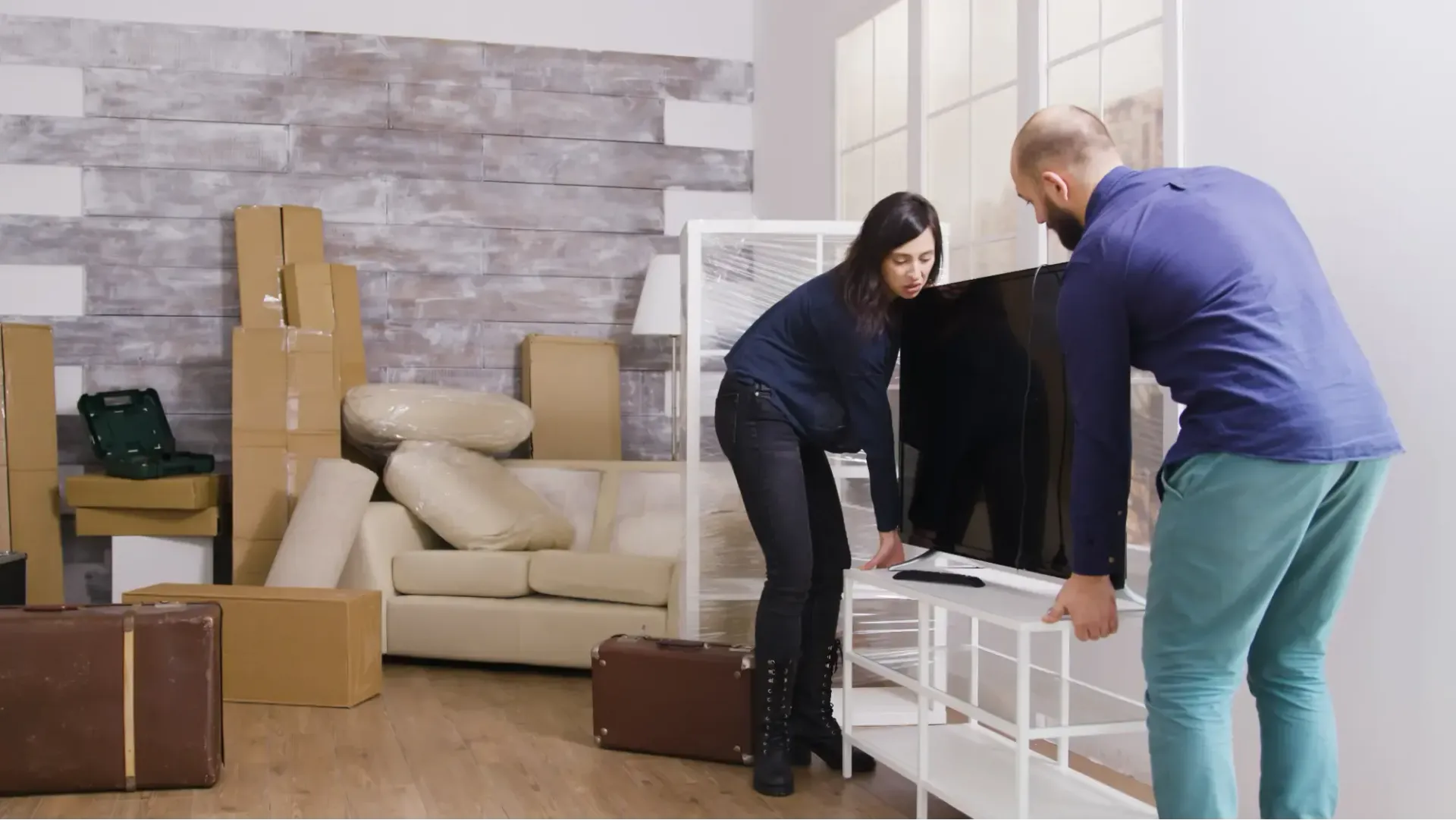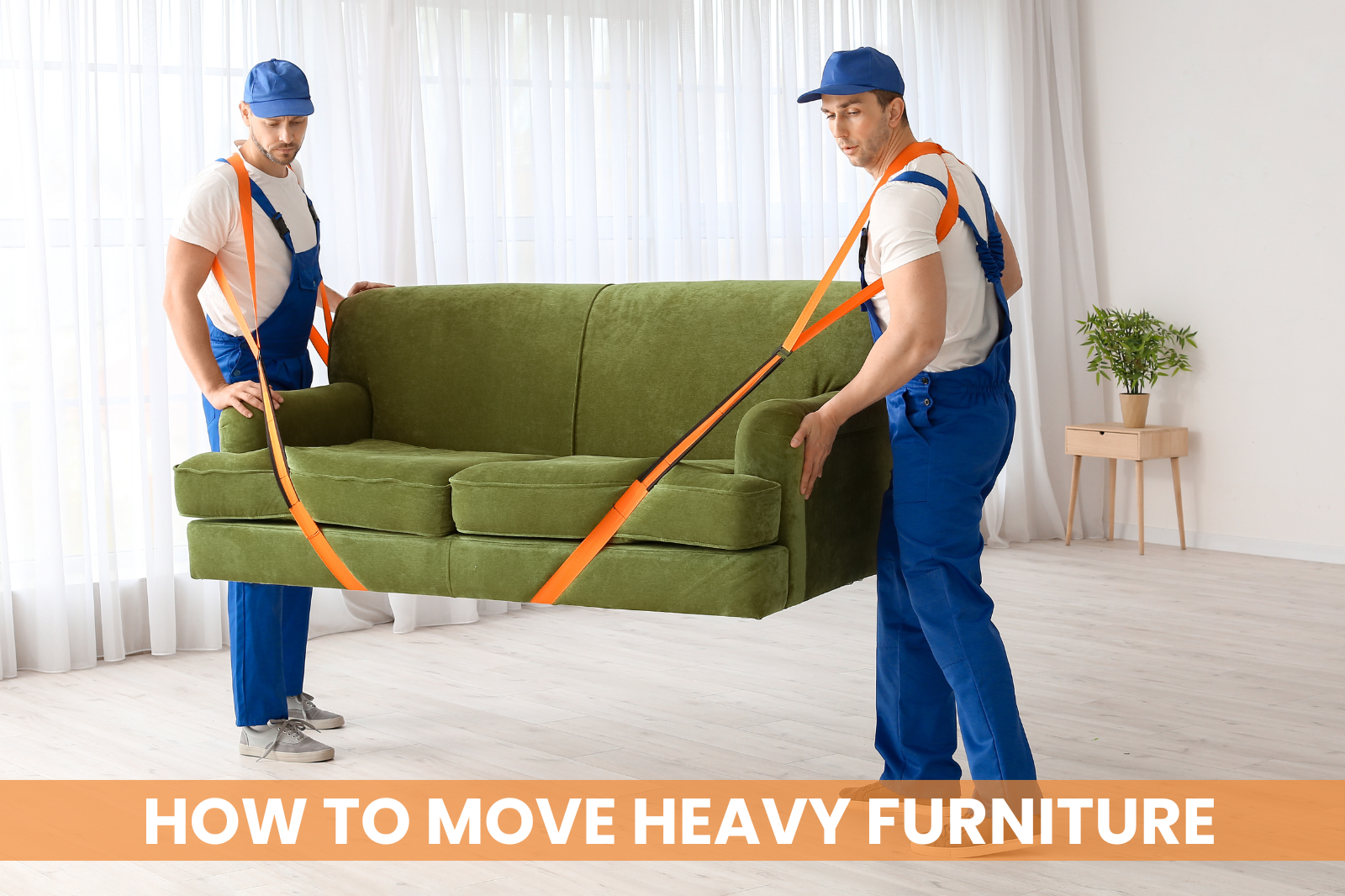How To Pack Plates and Dishes For Moving, Tips For Keep Plates Safe
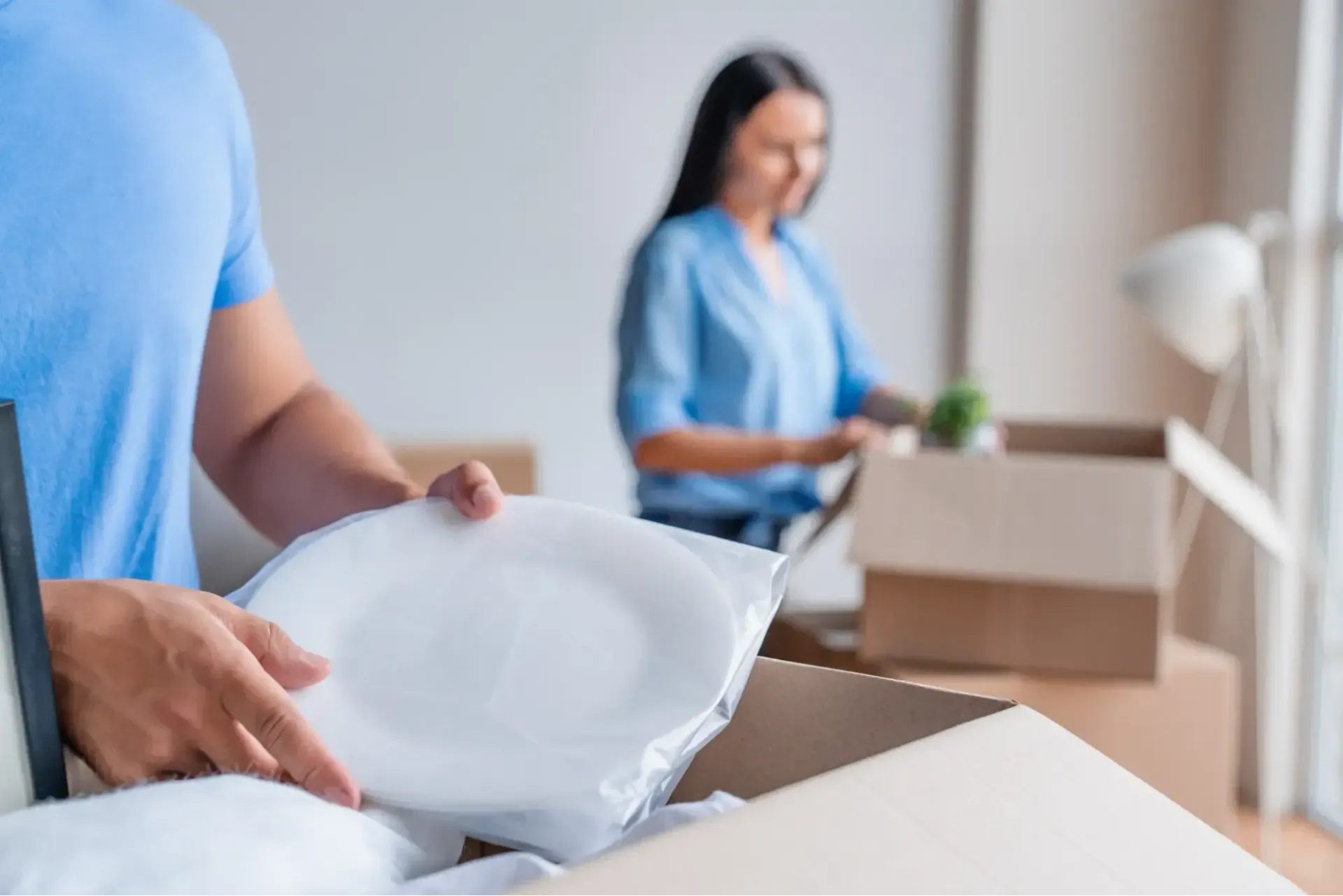
When it comes to packing dishes for moving, the goal is not just to pack items away, but to ensure they reach their destination without a scratch. Dishware, with its fragility, demands not only attention to detail, but also the careful selection of the right packing materials. So, how to pack plates for moving? Let's dive into some of the best ways to pack dishes to safeguard your items during a move.
Read more:
- Best Packing Tips & Golden Rules For Moving & Storage
- A Checklist for Virginia Residency Requirements
- Change of Address Checklist: Who to Inform When You Move to a New Address?
What are the best materials to use when packing dishes for moving?
- Bubble Wrap: Fragile items are protected by the numerous tiny air-filled bubbles, absorbing the force of sudden movements.
- Dish boxes: Sturdy dish boxes are ideal for packing dishes as they provide enhanced protection compared to regular boxes. If dish boxes are unavailable, you can use any medium or small-sized box as a suitable alternative.
- Packing Paper: Paper is the first defense against scratches and dust, and won’t leave ink stains like newspapers.
- Foam Pouches: These come pre-made to slip dishes inside. Some are designed with bubble wrap on the outside and a smooth foam interior, combining two protective elements in one product.
- Packing Tape: Use packing tape to securely seal your boxes and bundles. This ensures they stay intact during the move.
- Dish Packing Kits: These typically include sections or cells that keep items separate from each other, reducing the risk of knocking and potential damage.
- Dividers: These can be placed in boxes to create individual compartments for plates, bowls, and cups. They're also a great way to maximize space within a box.
- Styrofoam Plates: Use this dollar store item between your dishware! The foam acts as a buffer, reducing direct contact and minimizing scratching and chipping.
- Packaging Peanuts: Fill in the rest of your space with packing peanuts, which helps to avoid sudden breakage from slight shifting.
- Markers: Clearly label boxes as “Fragile” and “This side up.”
Read more:
How To Move Heavy Furniture By Yourself: 8 Easy Ways & Tricks
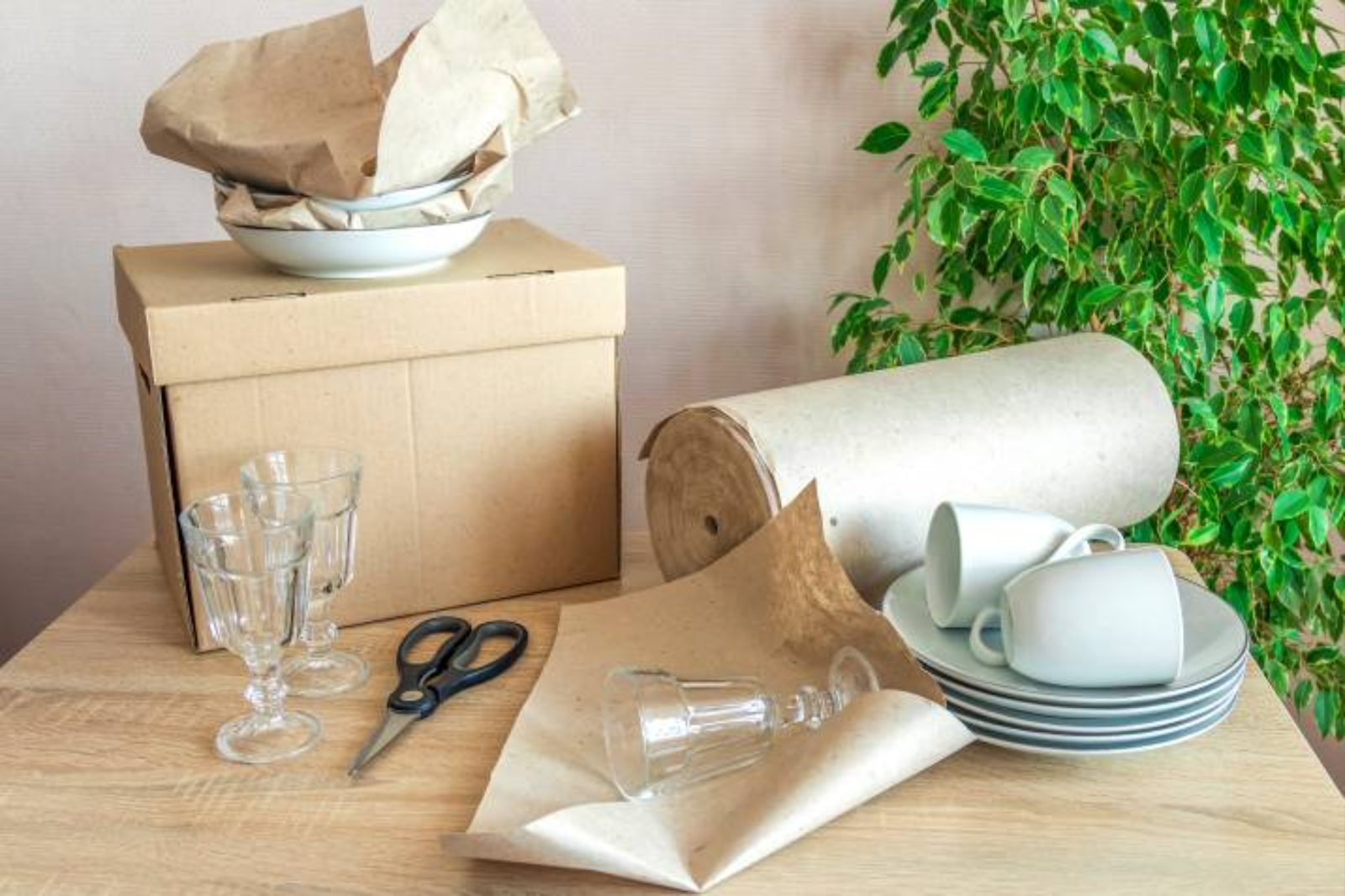
What is a dish box and how can it help avoid breakage?
A dish box is a type of sturdy, corrugated cardboard box that comes with enhanced features aimed at providing extra protection for delicate items like plates, bowls, glassware, and other kitchenware. These really are the leaders in boxes for packing dishes and glassware. They are typically constructed with a double-walled design, which offers an additional layer of cushioning compared to standard moving boxes.
The enhanced features include built in dividers that keep each dish secure, customizable sections to meet your dishware needs, and extra padding for snug security. At Stewart Moving and Storage, when you use our packing services we incorporate packing supplies that meet your needs. If you find yourself needing a dish box for your unique items, our expert moving coordinators can help you find exactly what fits your valuables.
Read more:
How to pack plates and dishes for moving: General Steps For Each
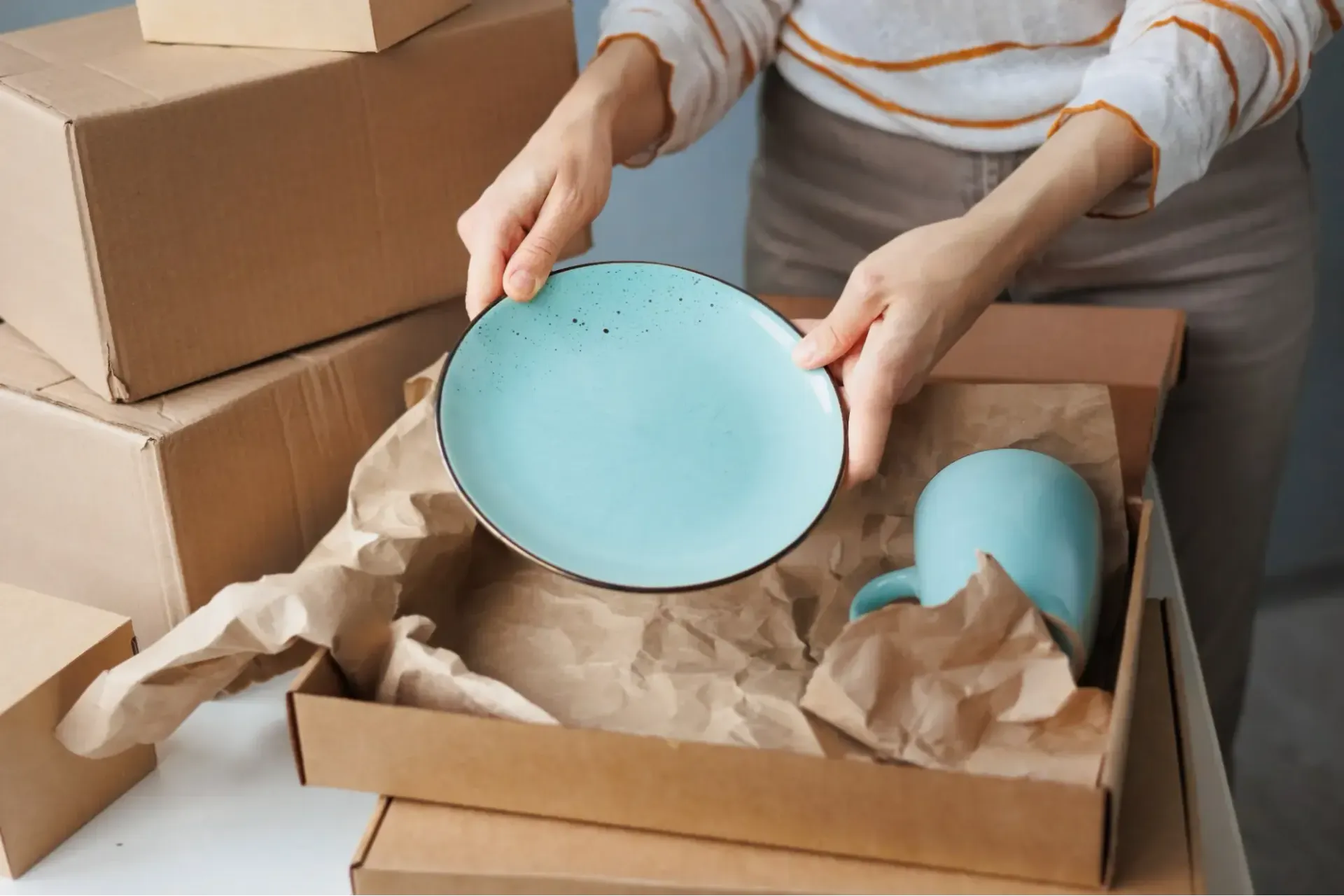
How to Pack Plates and Bowls:
- Create a cushioned base: Line the bottom of your box with crumpled packing paper, bubble wrap, or towels.
- Wrap individual items: Take each plate and wrap it securely with bubble wrap or packing paper, securing the ends with packing tape.
- Stack plates vertically, layer bowls by nesting smaller bowls inside larger bowls. Place the wrapped plates into the box on their edges, like vinyl records, as this position is less likely to cause damage during transit.
- Add extra padding between dishware: Use additional crumpled packing paper or foam sheets between each item to prevent them from shifting and rubbing against each other.
- Fill any remaining space: Ensure there are no gaps in the box that may create shifting. Label boxes “Fragile, This Side Up.”
Read more:
How to Move a Grandfather Clock
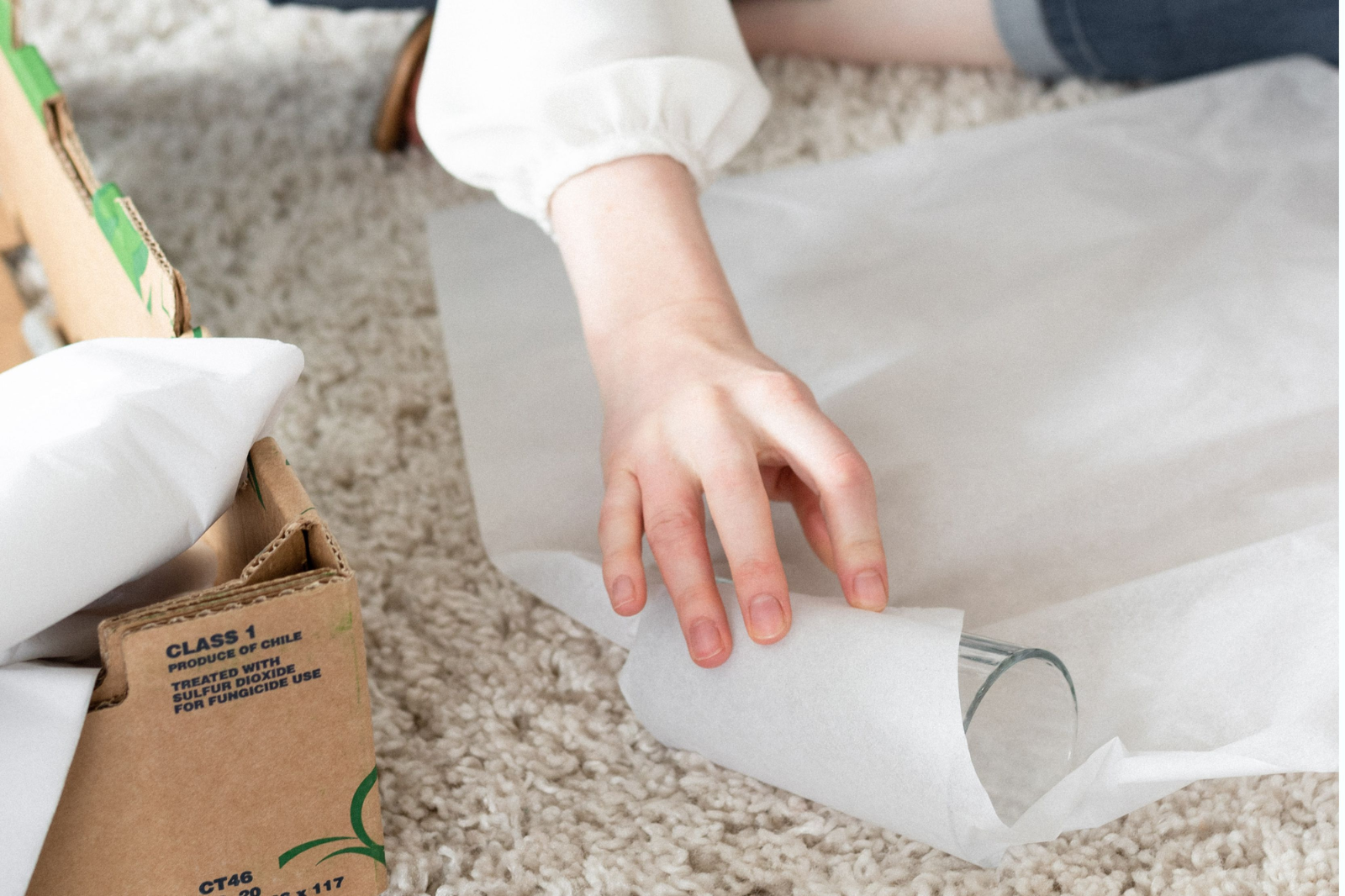
How to Pack Cups, Mugs and Glasses:
- Prepare the box: Line the bottom of the box with crumpled packing paper or bubble wrap for cushioning
- Wrap each item individually: Use bubble wrap or packing paper to wrap these dishes for moving and tape the bubble wrap or packing paper in place.
- Add a second layer if needed: For extra fragile items, consider double wrapping with an additional layer of bubble wrap.
- Place items into the box vertically: Stand cups, mugs, and glasses upright in the box.
- Label the box clearly: Write "FRAGILE" and "THIS WAY UP" on the box to inform handlers of the contents' delicate nature.
Read more:
How to Move a Pool Table
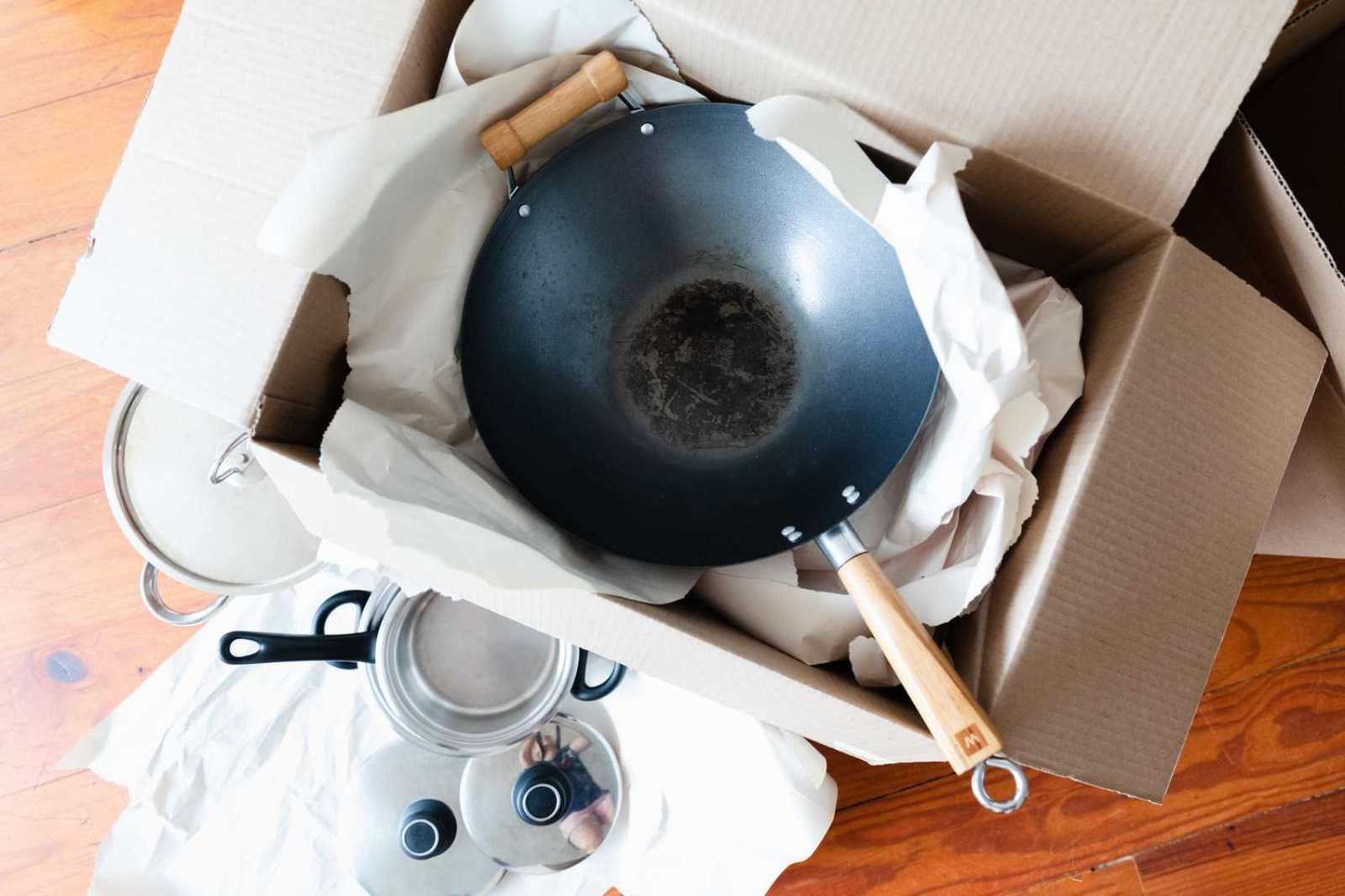
How to Pack Pots and Pans:
- Choose the right boxes: Select sturdy, medium-sized boxes for packing pots and pans, as they tend to be heavy.
- Stack pots and pans: Place smaller pots inside larger ones to save space, using packing paper to prevent scratching
- Protect handles and lids: Wrap the handles and lids with bubble wrap.
- Fill empty spaces: Use crumpled paper or towels in the box to keep the cookware from shifting and getting damaged during the move.
Read more: How Much Does It Cost On Average To Move A House (3 Bedroom)
How to Pack Pitchers, Mixing Bowls, Stemware and Platters:
Pitchers:
Wrap the pitcher in packing paper. Safeguard the handle by wrapping it separately with bubble wrap to absorb shocks during the move. Filling the pitcher with paper and placing it in a box with dividers will keep the pitcher secure.
Mixing Bowls:
Nest smaller bowls inside larger ones. Then, wrap the entire stack with bubble wrap. Fill empty space with packing peanuts or paper to ensure there's no room for the items to move during transportation.
Stemware:
Individually wrap each piece of stemware with packing paper and secure with tape. Start by stuffing the interior with paper, then wrap the exterior, paying extra attention to the delicate stems. Use compartmentalized boxes designed for glasses for extra security.
Platters:
Wrap platters in bubble wrap, then secure with tape. Ensure the entire surface, especially the edges, are well-protected. Store them vertically for extra protection.
Read more: TV Shipping Guide: How To Pack And Ship A TV
How to Pack Other Kitchen Items
Teapot:
To pack a teapot safely, start by ensuring it is clean and dry. Wrap the teapot in bubble wrap, paying special attention to the spout and handle. Secure the lid separately if it is removable. Place the wrapped teapot in a sturdy box filled with packing peanuts or crumpled paper to prevent movement. Seal the box with packing tape and label it as “Fragile” to ensure careful handling.
Knives:
When packing knives, first clean and dry them thoroughly. Wrap each knife individually in bubble wrap or packing paper, and secure the wrapping with tape. If available, use knife guards for added protection. Bundle the wrapped knives together, ensuring the blades face the same direction. Place the bundle in a sturdy box lined with packing material, seal the box with packing tape, and label it as “Sharp Objects” to ensure safe handling.
Read more:
Additional Tips On How To Pack Dishes For Moving
- When packing dishes for moving, consider using linens or towels as cushioning if you lack packing paper or bubble wrap. This not only protects your dishes but also saves space.
- For extremely fragile or valuable items, consider double-boxing. Place the smaller box inside a larger one and fill the gaps with packing peanuts or crumpled paper for added protection.
- Pack plates of similar sizes together. This helps prevent smaller plates from slipping under larger ones, which can cause damage.
- Set aside a set of everyday dishes to use before and during the move, so you don't have to unpack your carefully packed boxes prematurely.
Read more:
Helpful Packing Tips
How to pack dishes for moving safely? Stewart Moving Can Help!
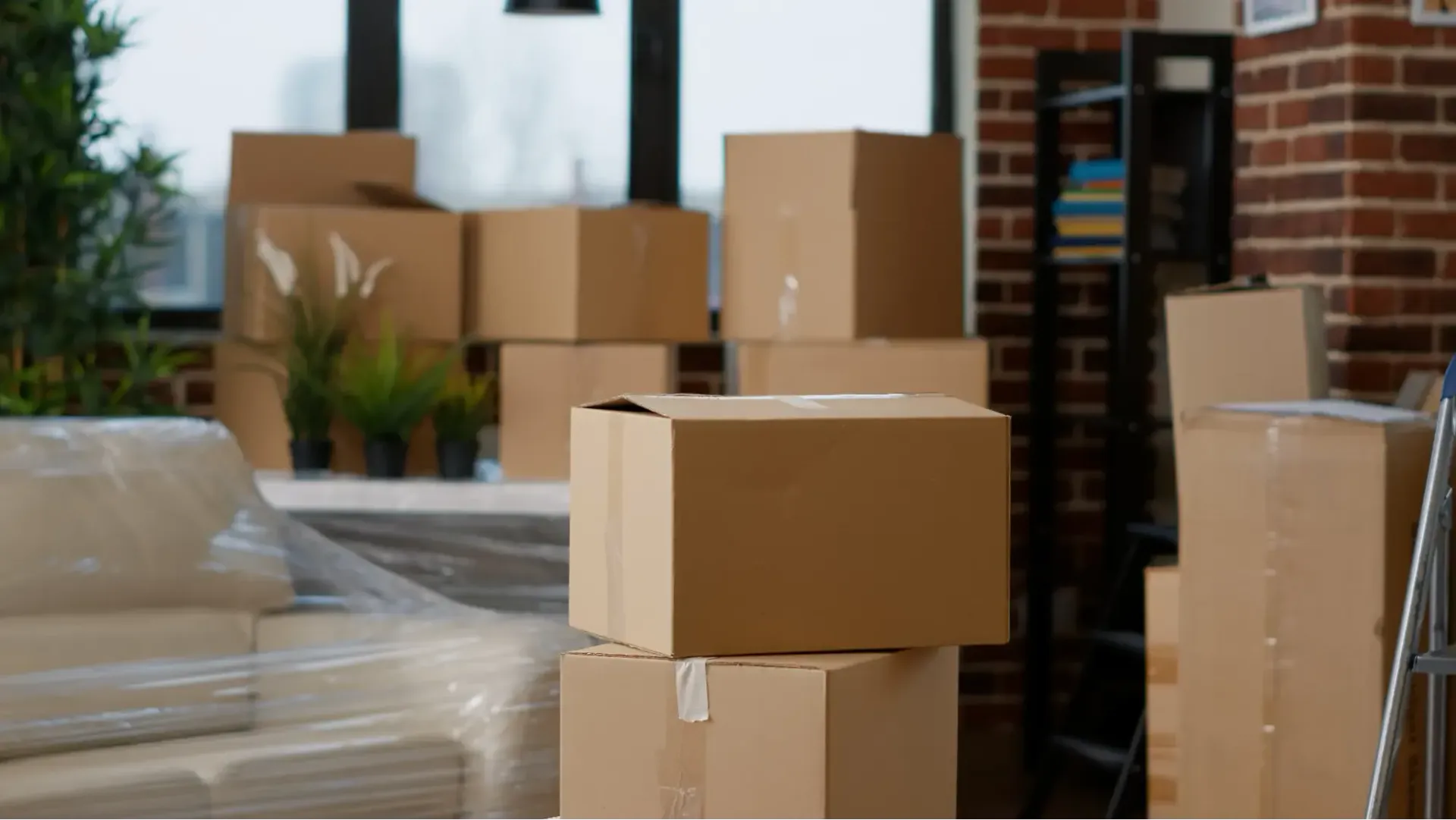
If you want to hire a professional mover, we are here to make your move as easy and stress-free as possible. We offer professional packing and unpacking services to save you time and protect your items during the moving process. Our packing service provides all the necessary materials and supplies you’ll need, so you don't have to worry about collecting boxes and other items.
If you are feeling nervous before the move, we offer a move coordination service where one of our staff will meet with you beforehand and craft a seamless plan from start to finish. Stewart also offers secure storage solutions which can serve as a backup plan for storing precious items in case of emergency. Before your move, check out these storage preparation tips to ensure you are ready for any sudden changes.
When it comes to ensuring the safety of any and all of your items during a move, expert advice can make all the difference. At Stewart Moving & Storage, we are more than a basic
moving company. We don't just provide the manpower to transport your belongings; we're here to support you every step of the way with professional insights and packing tips whether it ismoving long distance or short distance. Call us today for a
moving estimate!
> Learn more about our services:


